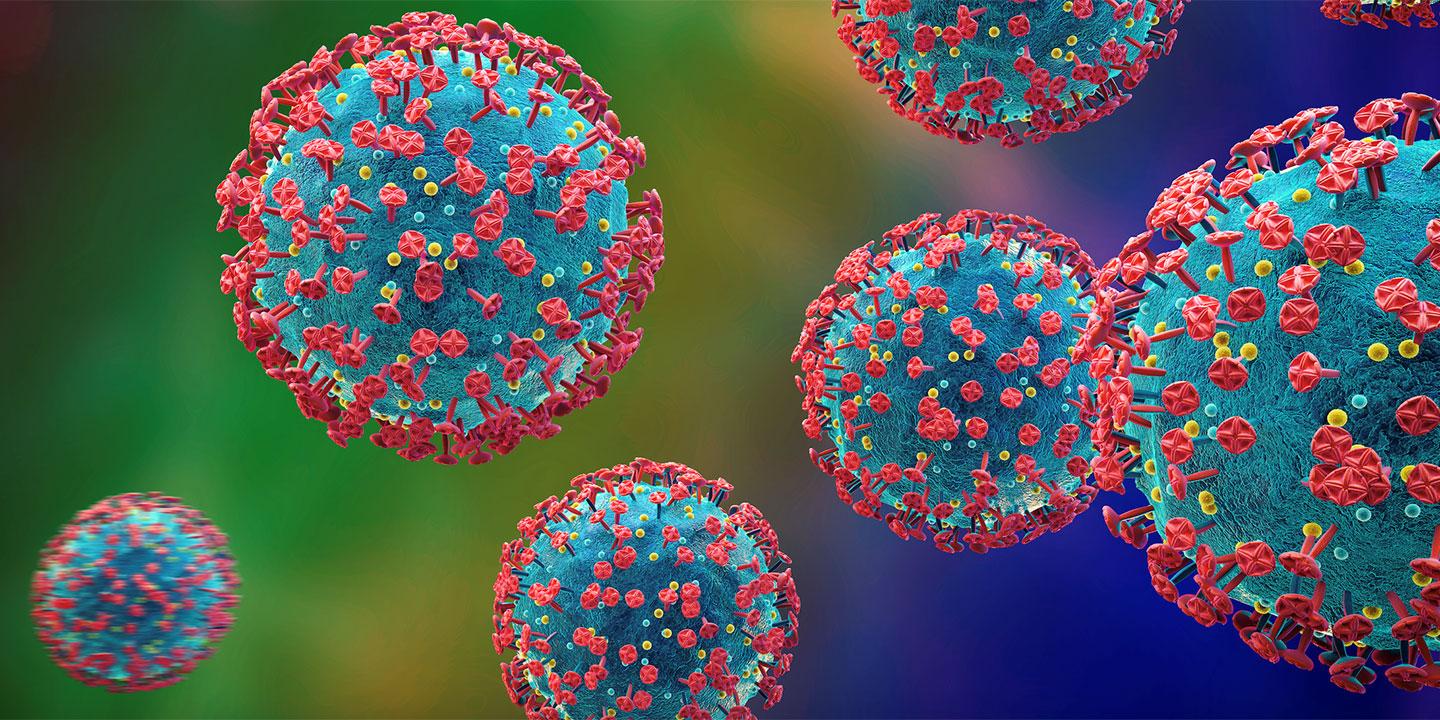Studying SARS-CoV-2 Protein-RNA Complexes

Interactions between viral proteins and the viral RNA genome are important for survival and pathogenicity of SARS-CoV-2. By combining two complementary structural biology techniques, we studied these interactions using the nucleocapsid protein as the main example and demonstrated how such interactions can be targeted for drug discovery.
Background
In the beginning of the pandemic, many fundamental aspects of interactions between proteins and RNA in coronaviruses were unknown, and gaps in knowledge remain to this day. A better understanding of these interactions helps to understand fundamental aspects of the biology of the virus and opens up additional opportunities for therapeutic interventions. Based on technology developed earlier by the participating research groups, we set out to study protein-RNA interactions in SARS-CoV-2, using the nucleocapsid (N) protein and the non-structural protein 3 (Nsp3) as targets.
Aim
Our goal was to use such newly established structural biology methods to study protein-RNA interactions between two important viral proteins (N and Nsp3) and their interacting RNAs. Specifically, in a first step, binding sites in these protein-RNA complexes would be located and models of the complexes would be built. In a second step, compounds (drug precursors, so-called fragments) would be identified that bind to the interaction regions and therefore interfere specifically with the binding between the partners. These compounds may be further developed into actual drugs.
Results
The nucleocapsid protein was the main target throughout our project. We combined the techniques of nuclear magnetic resonance (NMR) spectroscopy and cross-linking with ultraviolet light coupled to mass spectrometry (XL-MS) to study the interaction of the N protein with one of its target regions in the viral genome, the s2m element. Two different parts of the N protein (protein domains) that were known to bind RNA were separately studied and models of both domains in complex with s2m were generated. With these models in hand, we proceeded to identify drug fragments that bind to the interacting regions of the N protein domains and s2m, respectively. NMR spectroscopy identified such candidate compounds from a set of more than 600 fragments, revealing basic chemical structures that may be developed further in the future to increase the strength of the binding and to improve pharmacological properties. Together with collaboration partners from NRP 78, we are currently trying to obtain structures of the protein domains and the RNA in complex with such drug fragments by X-ray crystallography.
Research knowledge related to SARS-CoV-2 evolved quickly. One of the novel findings from other research groups was that the nucleocapsid protein undergoes a process called liquid-liquid phase separation (LLPS). LLPS causes two liquid phases to form from one solution, typically in the form of denser droplets in a surrounding liquid. In the context of the coronavirus, such processes are expected to be important for packaging of the RNA genome inside the virus, and for viral replication in the host organism. Based on these new findings, we also decided to study LLPS processes involving the N protein. Initial results generated in this project revealed conditions under which droplets form and dissolve again, and what structural changes occur in the protein and the interacting RNA when transitioning from one single phase to a phase-separated state.
With respect to our second target, Nsp3, we performed preliminary experiments to identify RNA- binding regions with model RNAs. Developing models in a similar way as for Nsp3 proved more difficult. However, as Nsp3 also became known to interact with the N protein, we started further experiments that connect the two target proteins to RNA binding.
Specific contribution to tackle the current pandemic
We could demonstrate the general validity of our approach – to target specifically protein-RNA interactions – by successfully generating structures of complexes and by identifying small molecules that bind to the targets. Our approach, which was published in final form in early 2023, will be of interest to pharmaceutical companies as an alternative way to develop antiviral drugs. Moreover, interest in LLPS is growing rapidly and offers another direction for drug development by interfering with biological mechanisms that involve phase separation.
Original title
Rapid Hybrid Structure Determination of Coronavirus Protein-RNA Complexes as a Basis for Drug Screening for the Treatment of COVID-19
